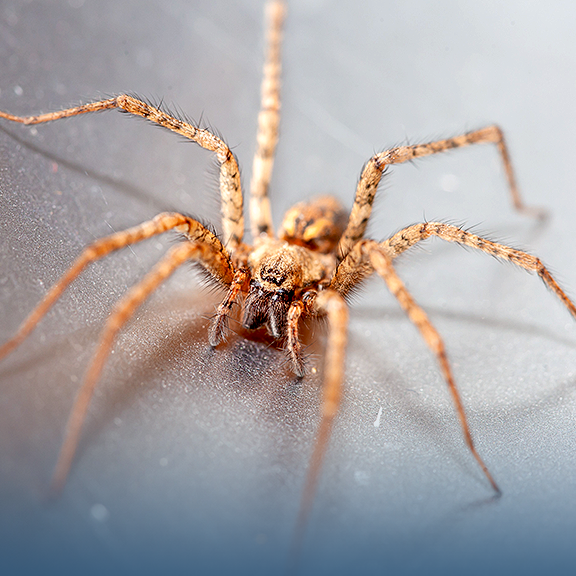Spiders
Spiders are arachnids, distinct from insects with eight legs and two main body segments. Although they’re the source of a phobia for many people, spiders are essential to ecosystems because they help regulate insect populations. Most are harmless to humans, though a few species can be dangerous.
Common Spider Species
Some of the most common spiders found indoors include the house spider (Parasteatoda tepidariorum), which builds messy webs in corners, and the cellar spider (Pholcus phalangioides), known for its long legs. Wolf spiders (Lycosidae) are ground-dwelling hunters, while jumping spiders (Salticidae) are small, agile, and quick to pounce. Tarantulas (Theraphosidae), though large and often intimidating, are generally harmless to humans. Other species you may encounter include the brown recluse (Loxosceles reclusa), known for its violin-shaped marking, and the black widow (Latrodectus mactans), easily identified by its shiny black body and red hourglass marking, both of which can pose risks to human health.
Anatomy & Hunting Techniques
Spiders have eight legs that are sensitive to vibrations, helping them detect prey. Most species use silk produced by spinnerets on their abdomen to create webs for trapping insects. Active hunters like wolf spiders chase down their prey, while web-building species wait for insects to become trapped. Spiders use their fangs to deliver venom, which paralyzes their prey.
Dangerous Spiders to Watch Out For
Though most spiders are harmless, some species - such as the black widow and brown recluse - can pose health risks. Black widow venom can cause muscle cramps and pain, while a brown recluse bite may lead to tissue damage. Both species tend to inhabit dark, quiet spaces and will bite only when they feel threatened.
Spider Life Cycle
Spiders go through three life stages: egg, spiderling, and adult. Eggs hatch into spiderlings, which molt several times before becoming adults. Male spiders often perform courtship rituals to attract females, and once mated, the cycle begins again. The average spider lives from one to two years, depending on the species.
Prevention & Control
To prevent spider infestations, seal cracks and gaps around doors and windows, and keep your home tidy. Reducing other pests will also discourage spiders, as they prey on smaller insects. If you have a serious spider problem, professional pest control can help safely remove them and prevent further issues.


